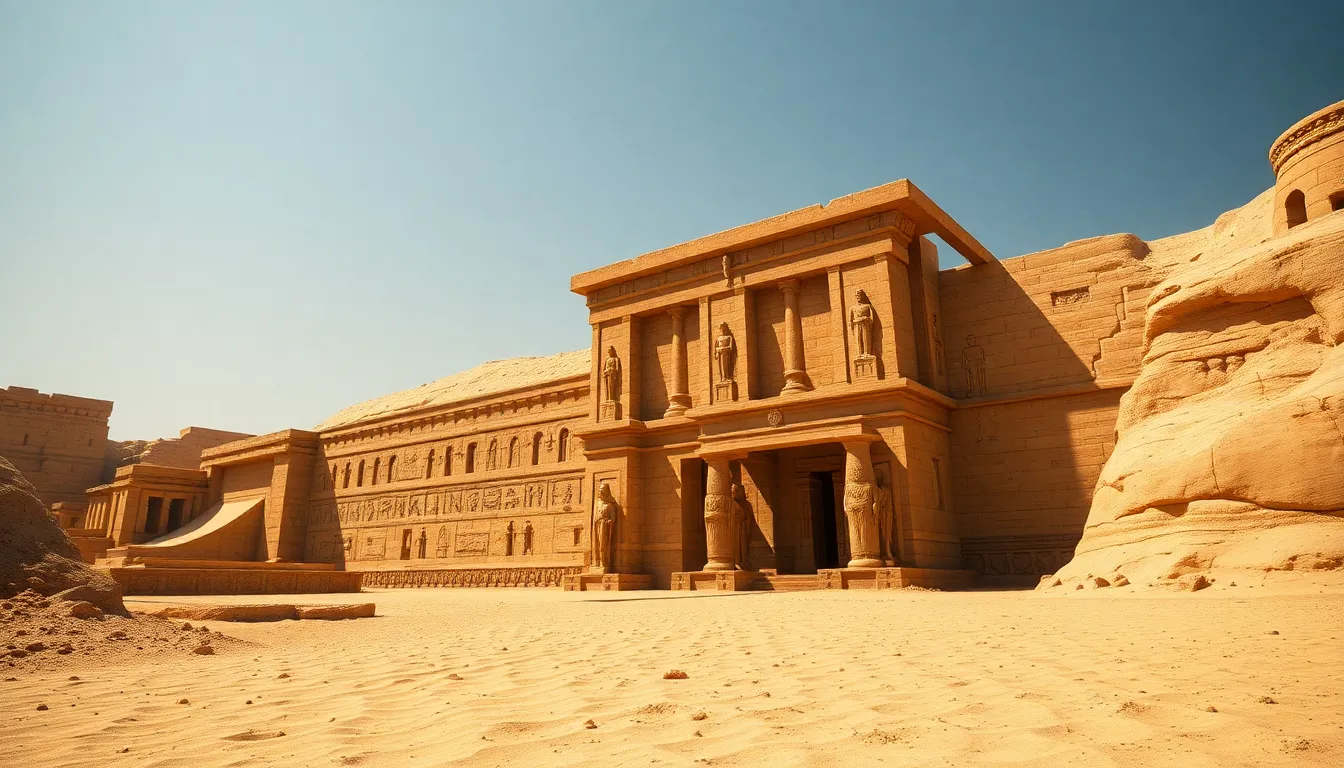Beneath the Sand: Discovering Egypt’s Lost Sacred Architecture
I. Introduction
Egypt’s architectural history is a tapestry woven from millennia of innovation, artistry, and spirituality. From the grandeur of the pyramids to the intricate designs of temples, ancient Egypt has left an indelible mark on the world. Among these architectural marvels, sacred architecture holds a special place, reflecting the deep religious beliefs and rituals of a civilization that revered its gods and the afterlife.
This article aims to explore the recent discoveries beneath the sands of Egypt, highlighting the significance of sacred architecture in ancient Egyptian culture and the ongoing efforts to uncover and preserve these monumental sites.
II. The Historical Context of Sacred Architecture in Egypt
Sacred architecture in ancient Egypt encompasses a variety of structures, including temples, tombs, and monumental statues, all designed to honor the gods and facilitate the journey to the afterlife.
A. Definition and significance of sacred architecture
Sacred architecture serves as a physical manifestation of religious beliefs, providing a space for worship and rituals. These structures were often intricately decorated and included hieroglyphs that conveyed religious narratives and the desires of the pharaohs.
B. Key periods of architectural evolution in ancient Egypt
- Old Kingdom (c. 2686–2181 BCE): The era of the pyramids, with monumental tombs like the Great Pyramid of Giza.
- Middle Kingdom (c. 2055–1650 BCE): A period of revival, marked by the construction of temples and elaborate mortuary complexes.
- New Kingdom (c. 1550–1070 BCE): The apex of temple architecture, with grand sites such as Karnak and Luxor.
C. Major deities and their associated structures
Different gods were worshipped in distinctive architectural forms, including:
- Amun: Temples at Karnak and Luxor.
- Osiris: Tombs and temples at Abydos.
- Isis: Temples throughout Egypt, particularly at Philae.
III. The Role of Archaeology in Uncovering Lost Structures
Archaeology plays a crucial role in revealing the secrets of Egypt’s past, employing various techniques and technologies to explore the depths of its ancient landscapes.
A. Techniques and technologies used in archaeological exploration
Modern archaeology employs a range of methods, including:
- Ground-penetrating radar (GPR): To detect subterranean structures without excavation.
- Satellite imagery: To identify potential archaeological sites from above.
- Geophysical surveys: To map out buried features before digging.
B. Notable archaeological discoveries in Egypt
Recent excavations have revealed numerous significant sites, including:
- The Tomb of Tutankhamun in the Valley of the Kings.
- The Lost Golden City of Luxor.
- The Temple of Ramses II at Abydos.
C. Challenges faced by archaeologists in desert environments
The arid conditions present unique challenges, such as:
- Extreme temperatures that can affect excavation processes.
- Sandstorms that can obscure sites and hinder visibility.
- Limited access to remote locations without proper resources.
IV. Case Studies of Recently Discovered Sacred Sites
Numerous sacred sites have been uncovered in recent years, shedding light on ancient Egyptian practices and beliefs.
A. The Temple of Ramses II at Abydos
This temple is dedicated to Osiris and features intricate carvings that narrate the king’s victories and religious devotion.
B. The Lost Golden City of Luxor
Discovered in 2020, this site dates back to the reign of Amenhotep III and provides insight into daily life and religious practices.
C. The Serapeum of Saqqara
This vast burial site for sacred bulls illustrates the significance of the Apis bull in the ancient Egyptian religion.
V. The Cultural and Religious Significance of These Discoveries
These archaeological findings deepen our understanding of ancient Egyptian culture, revealing the intricate connections between architecture, religion, and society.
A. Insights into ancient Egyptian beliefs and rituals
The architectural design of these sacred sites often reflects the cosmology and mythology of the ancient Egyptians, providing a tangible link to their beliefs.
B. Connections between architecture, religion, and society
Temples and tombs were not only places of worship but also served as cultural hubs where social and political life intersected with religious practices.
C. The impact of these findings on our understanding of Egypt’s past
Each discovery adds to the narrative of ancient Egypt, challenging previous assumptions and enhancing our comprehension of its complexity.
VI. Preservation Efforts and Ongoing Research
Preserving these newly discovered sites is vital for future generations to learn about ancient civilizations.
A. Importance of conserving discovered sites
Without proper conservation, these sites risk degradation due to environmental factors and human activity.
B. International collaborations for preservation
Efforts are underway to involve global organizations in the preservation of Egypt’s cultural heritage, including:
- UNESCO initiatives for site protection.
- Collaborative research projects with foreign universities.
C. Future research directions in Egyptology
Ongoing archaeological work continues to explore lesser-known sites and utilize advanced technologies to uncover Egypt’s hidden history.
VII. The Impact of Tourism and Public Interest
Discoveries of sacred architecture have a significant impact on tourism in Egypt, which in turn influences local economies and global perceptions of the country.
A. How discoveries influence tourism in Egypt
New archaeological finds attract tourists eager to experience the history and culture of ancient Egypt firsthand.
B. Balancing preservation with public access
While tourism provides funding for preservation, it also poses risks to the sites, necessitating careful management strategies.
C. Educational initiatives to engage the public with Egypt’s heritage
Programs aimed at educating visitors about ancient Egyptian culture and archaeology have become essential, fostering appreciation and stewardship of these sites.
VIII. Conclusion
The uncovering of sacred architecture in Egypt not only reveals the grandeur of the ancient civilization but also enriches our understanding of its complex societal structures and beliefs. The mysteries and allure of Egypt’s buried past continue to captivate scholars and the public alike.
As we strive to preserve these historical treasures, it is crucial to recognize their significance for future generations, ensuring that the stories of Egypt’s ancient culture endure.




